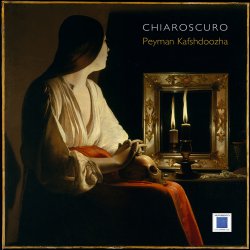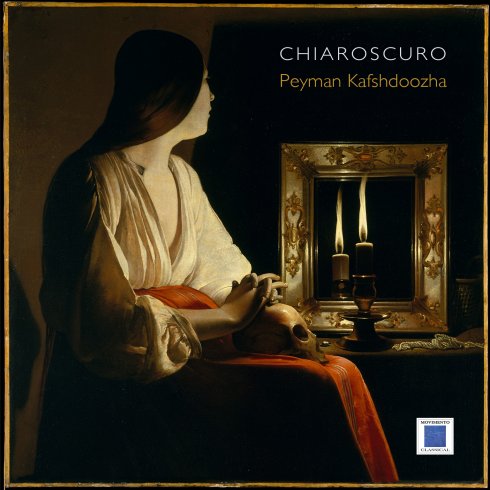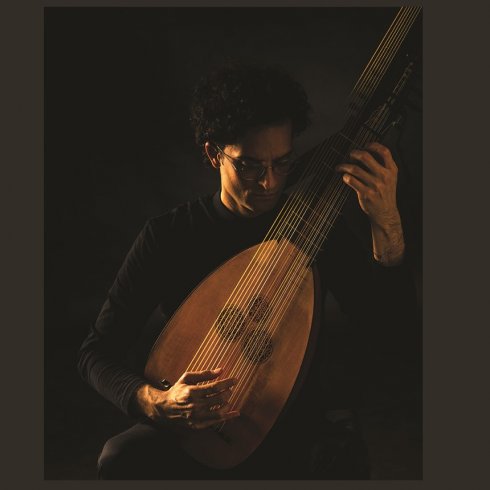

Chiaroscuro
Chiaroscuro - The two ages of the archlute
In the very end of the 16th century, at the dawn of the baroque era, many musical and organologica! experiments were being led in several flourishing ltalian cultura! centers, with Ferrara among the most avant-garde.
Alessandro Piccinini, the lutenist at the Ferrarese court of Alfonso Il d'Este, started in 1594 experimenting with extended bass strings on a Iute, which led to the invention of the arciliuto or, as some called it, liuto attiorbato . In the instructions of his Libro Primo from 1623 he explains that he first commissioned a Iute with a very long body
!rom the Paduan luthier Cristoforo Eberle, on which longer bass strings could be attached to a second bridge closer to the edge of the soundboard, the main bridge being in the middle of the instrument. But he soon realized that this prototype Iute, today housed in the Kunsthistorisches Museum in Vienna , did not reach his expectations, as the basses, being plucked in the middle of the string, did not produce a satisfying sound.
He therefore had the idea of extending the neck instead, mounting ali the strings on the same bridge . Being content with the result, he quickly commissioned three more such instrumentsfrom the Paduan luthier: the archlute was born. Two of these instruments were given as a present by the duke to Carlo Gesualdo, the infamous Principe di Venosa, unique compose, and Iute virtuoso who was at the time exiled in Ferrara, and who then took thern to the south, leaving one with the Cavaliere del liuto (Francesco Pinti) in Rorne, and taking the other one with him to his castle in Gesualdo.
The newly invented instrument was a perfect image of the sound research of the time. Extending the lower range , the archlute touched the extremes which were also sought alter in the music of the time: it could convey a wide array of sound colors lor the increasingly colorful (chromatic) music, searching lor the limits of expression. As the Fiorentine Vincenzo Galilei wrote in 1584, no other instrurnent could "expressthe effects of the harmonies such as the harshness, melodiousness , tartness and sweetness; and, subsequently, the yells, the wails, the shrieks, the laments and, lastly, the calm and the fury, with such charm and wonder as do the first-rate Iute players." Alessandro Piccinini, the inventor and the first virtuoso of this instrument, was born in 1566 in a Bolognese family with an important Iute playing tradition. In 1582 his father Leonardo Maria look him and his two brothers Filippo and Girolamo to Ferrara to serve together at the court of Alfonso Il d'Este.The tour of the foremost players of the time were thus active there, together with Luzzasco Luzzaschi, until the death of the duke in 1597, possibly meeting other players like John Dowland during that time. Alter that, the three brothers continued working lor the cardinal Aldobrandini, following him to Rome where they settled in 1600. Alessandro stayed in Rorne longer than his siblings and started working lor Enzo Bentivoglio who, in an attempt to recreate the glorious concerto Ferrarese, employed also Luzzaschi's student Girolamo Frescobaldi. In 1611, Alessandro returned to Bologna where most probably his son Leonardo Maria 11 was born. Then active also as a wine connoisseur and a merchant of artifacts, he continued to perform and teach the Iute and published in 1623 his first book of works lor (arch)lute and chitarrone, containing music of exceptional quality with well constructed renaissance style counterpoint, wonderful melodies and surprising, lorward looking harmonies ol the new style. But this book is not only important lor its amazing toccatas, correntes, galliards, ciacconas and passacaglias; with its abundant instructionsat the beginning, it gives a unique and important insight in the performance practice of the time. Besides interesting organologica! inlormation, it explains special playing techniques which are rarely heard today. Such case is a sort of a dedillo technique he describes in order to perform a gruppo, and which resembles not only vihuela technique , but it is also the basis of Persian setar playing: Peyman's roots have certainly inspired him to develop this technique to such extent that it shines through on this recording. Alessandro's second book ol Iute tablatures was published posthumously in 1639 by his son, also containing Leonardo Maria's music, just as colorful as his father's and not really distinguishable !rom it.
Even more colorful could be considered the music of Giovanni Girolamo Kapsberger. Born around 1580 to a noble German lamily most probably in Venice, he spent his early teenage years studying in Augsburg before moving back to ltaly, possibly Rome , alter 1596. In 1604, the year ol publication ol his Libro primo d'intavolatura di chitarrone, we lind him in Naples where he married Neapolitan noblewoman Girolama de Rossi with whom he had at least nine children. By 1606 they moved to Rome, where the nobile Alemanno became part of the eternai city's most exclusive circles: besides his exceptional musical qualities, also his talent lor networking helped him to get in the musical circles of the Papal court ol Urban VIII and, among others, establishing close relationships with the Barberini lamily and the elite around Galileo Galilei. In 1609, his book of madrigals was published, lollowed a year alter by the lirst book ol villanelle and, in 1611, the Libro primo d'intavolatura di lauto, the source used lor the present recording. Until 1640, the year of publ ication of his fourth and last book of tablatures lor the chitarrone, he had composed and published a great number of instrumental and vocal music, including an opera which has unlortunately been lost. Olten described as having a difficult character by his colleagues, our noble musician was one ol the loremost musical figures of the first hall of the 17th century, working alongside Girolamo Frescobaldi and Stefano Landi and possibly meeting the aforementioned Gesualdo and Piccinini. Contrary to Piccinini, who seemed to preler the archlute over the chitarrone, Kapsberger's instrument ol predilection was the later, granting him the reputation as il Tedesco dalla tiorba. His extravagant style lits this exuberant instrument particularly well, but he had composed some of the most interesting and persona! music ever written lor Iute as well. Highly originai, his style is dominateci by the musical gesture which seems to burst !rom his exceptional mastery ol the instrument. lmbued with an innovative use of chromaticism and fantasticai rhetoric, his unmistakable musical language is at the avant-garde of the Roman stile nuovo of the first hall of the 17th century, stili sounding modem even to our ears.
Pietro Paolo Melli completes the trio of the early archlute virtuosos who published music lor this instrument. He was born in Reggio Emilia in 1579 and entered to serve the Viennese court of Matthias in 1612, who became the Holy Roman Emperor the following year. Between 1612 and 1620, five books of his compositions lor archlute and theorbo were published in Venice containing some wonderfully idiomatic cappricci and dances with variations in the style-brisé. Alongside with Piccinini, Kapsberger and some other composers, such as Saracini, Doni or Falconieri, they form the period of archlute's "infancy": crazy and surprising, daring and extreme, fresh and naive.
With time, the arciliuto and its music slowly started becoming more and more mature. Gianoncelli's book !rom the middle of the 17th century is already a testimony of this slow development towards what we could cali the "ltalian baroque Iute" But it is not until the publication of Giovanni Zarnboni's Sonate d'intavolatura di leuto in 1718 that this evolution reached its peak. With a strong influence by Corelli's music and that of Silvius Leopold Weiss, who he possibly also met in Rome, Zamboni defined a new style lor this instrument, gentle and elegant, typically Rornan. While a rather large amount of little-known 18th century music tor archlute survives in manuscripts around ltaly, Zamboni's print is one of the last of a kind, a swan song of this instrument which continued its lite well into the beginning of 19th century, before disappearing definitely.
Between shadow and light, the instrument and its music comes to lite again through this anthology, a voyage !rom Caravaggesque intensity towards the enlightenment.


